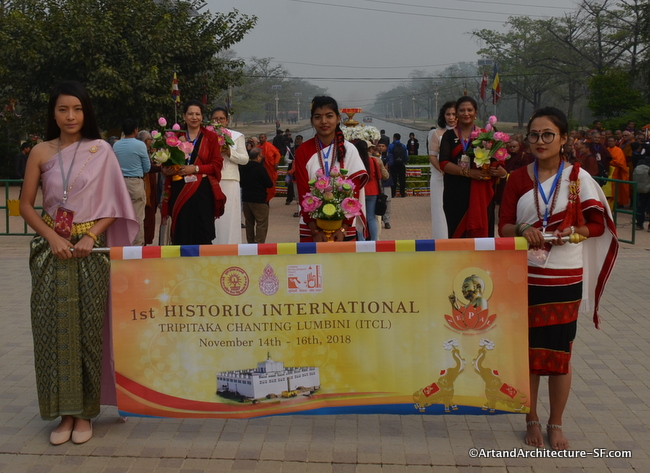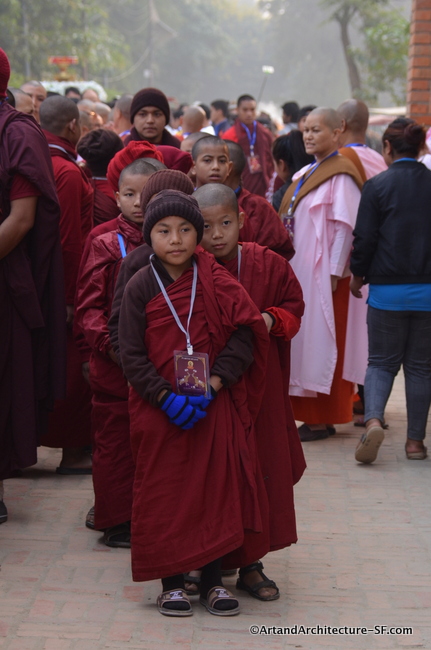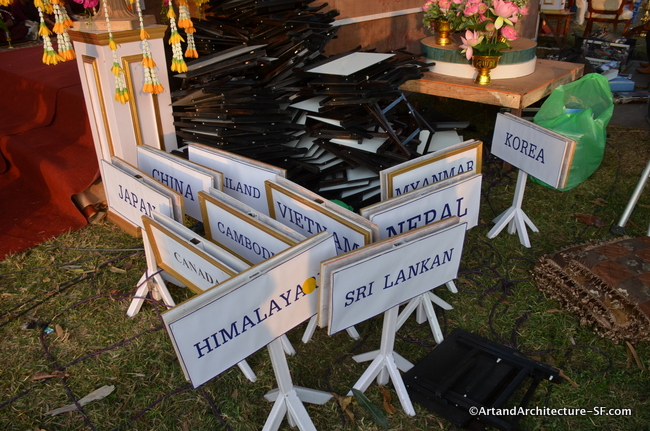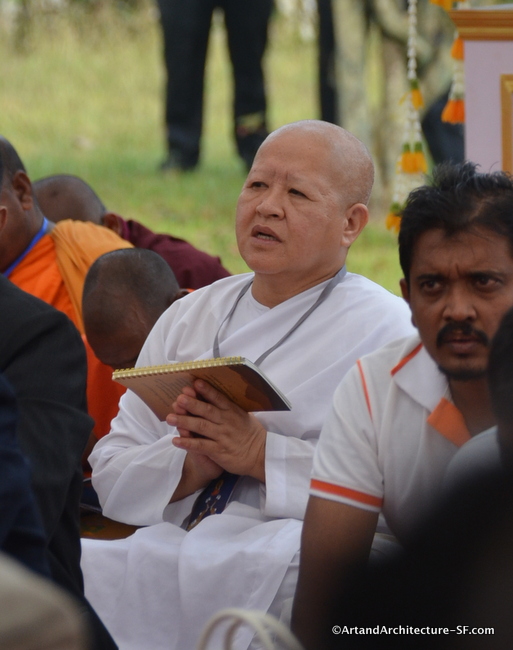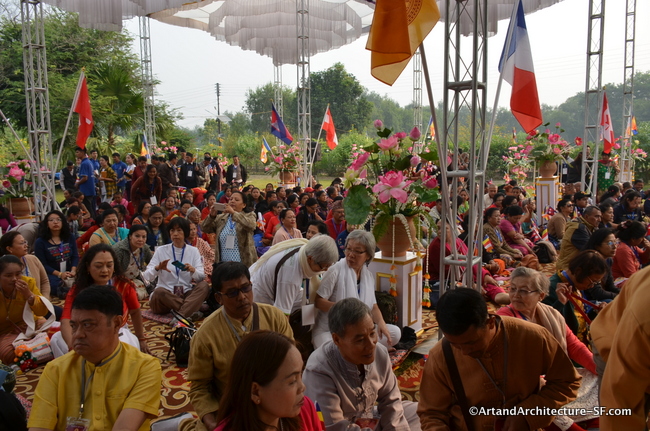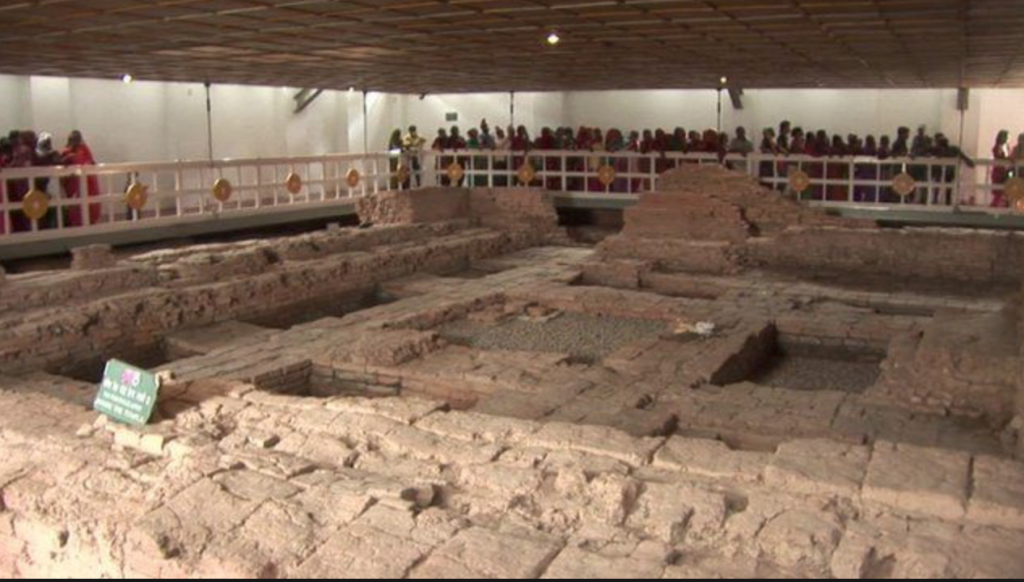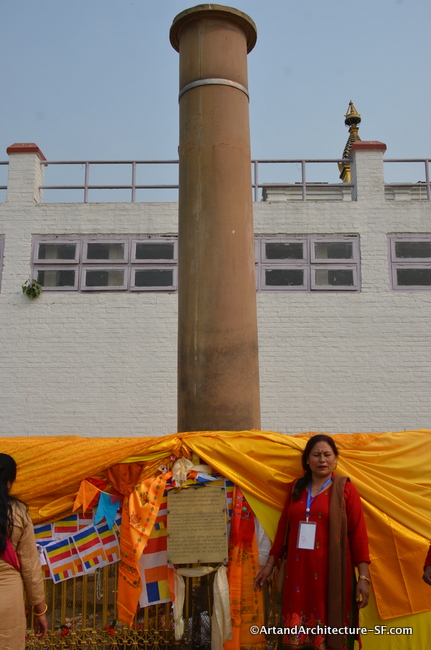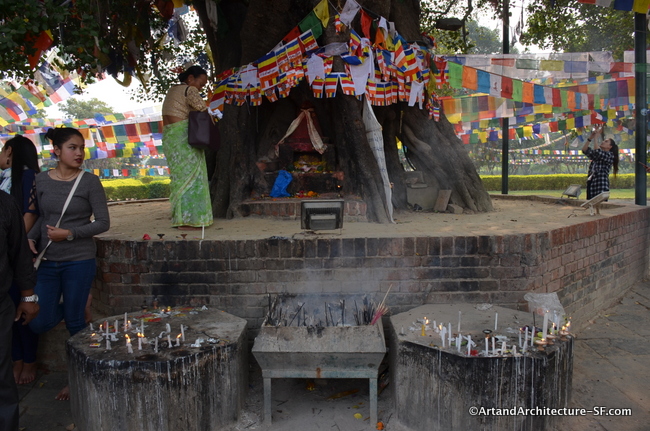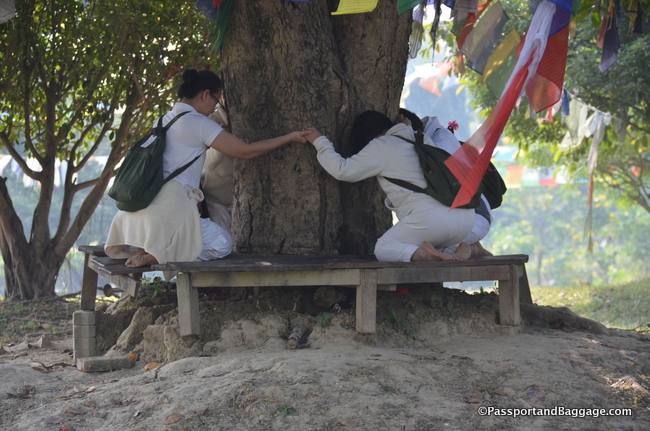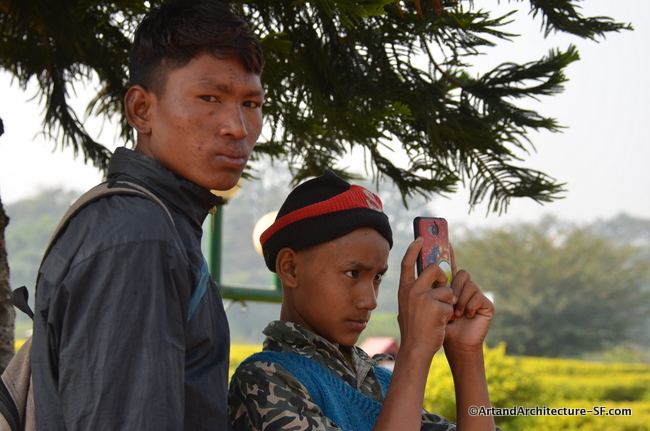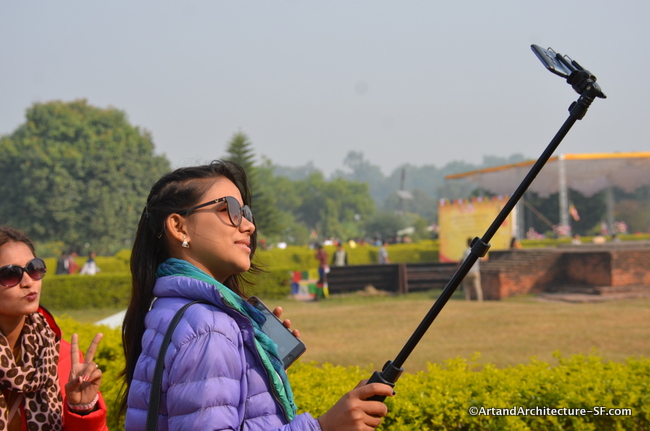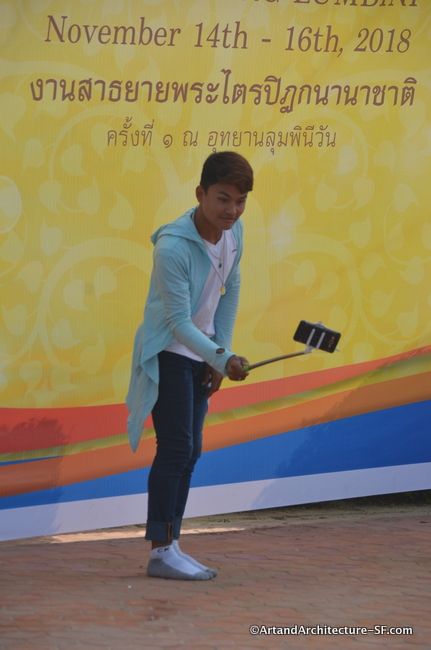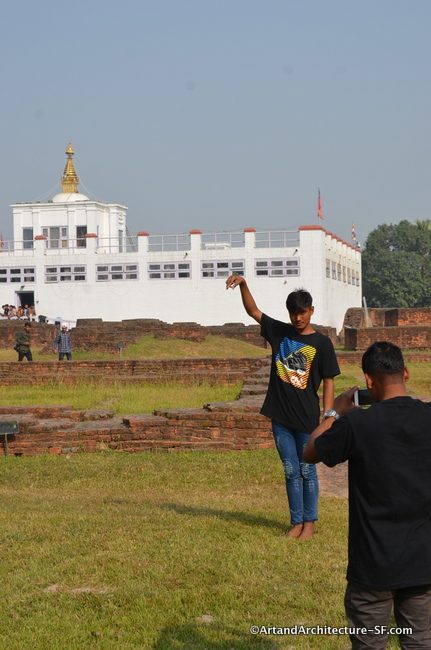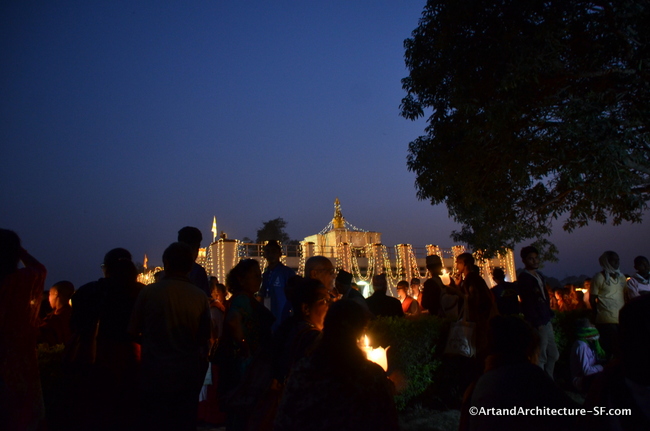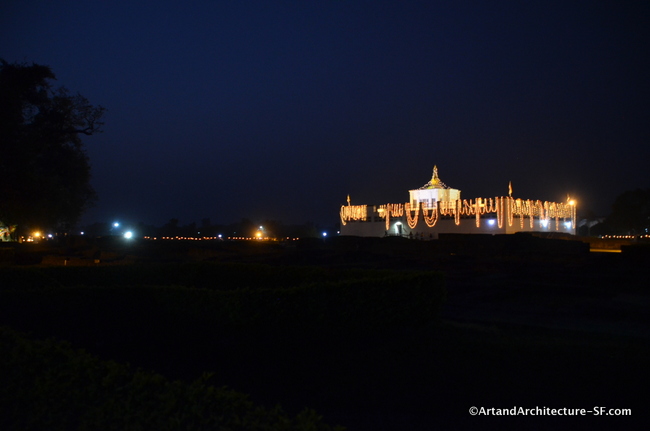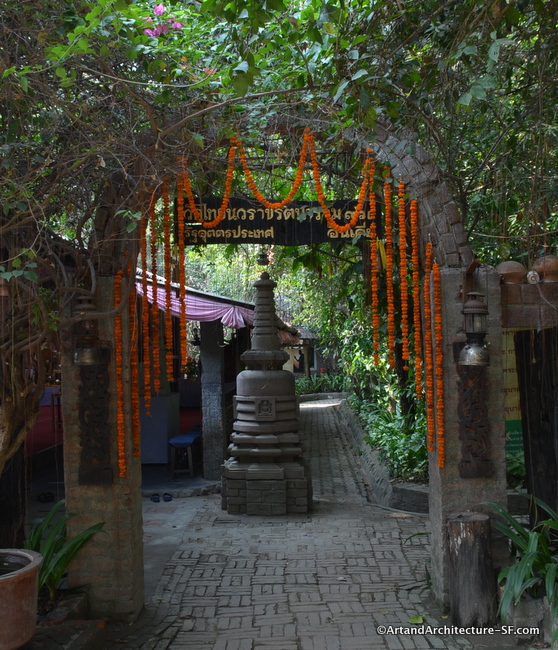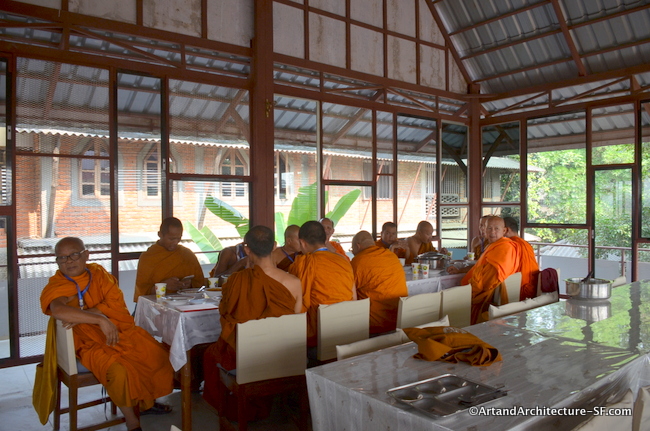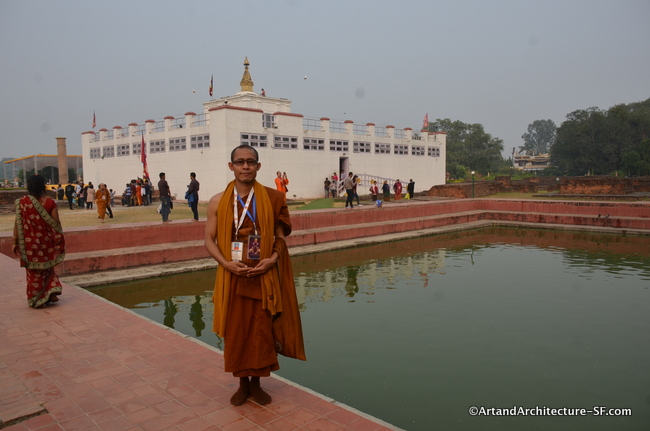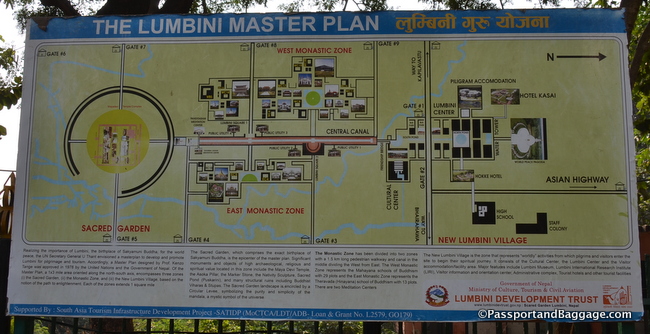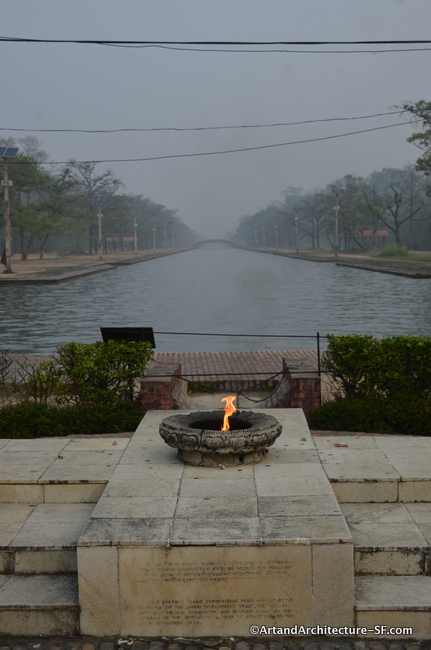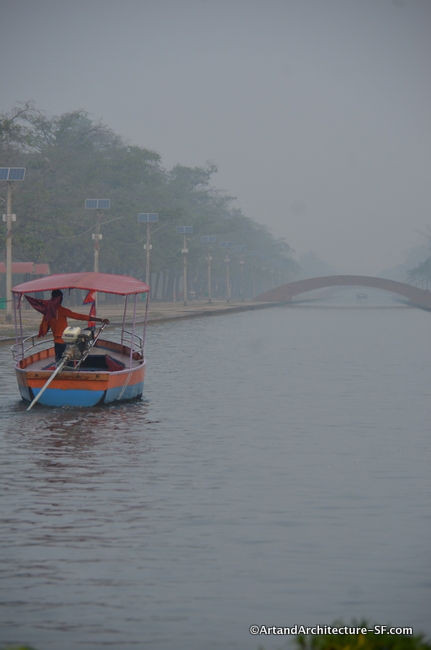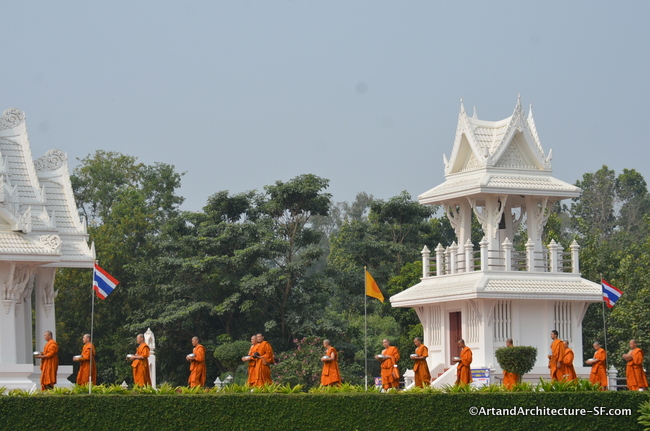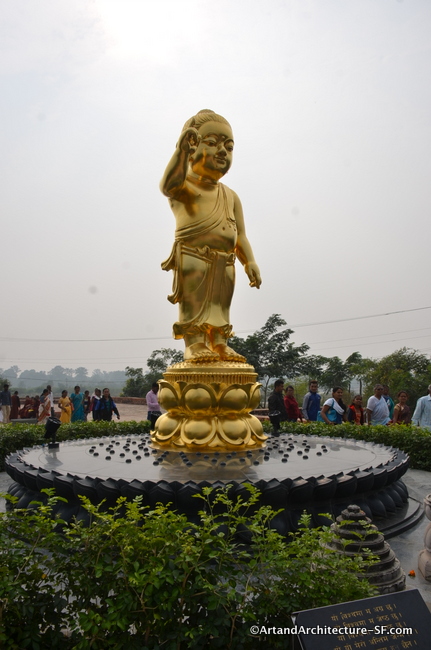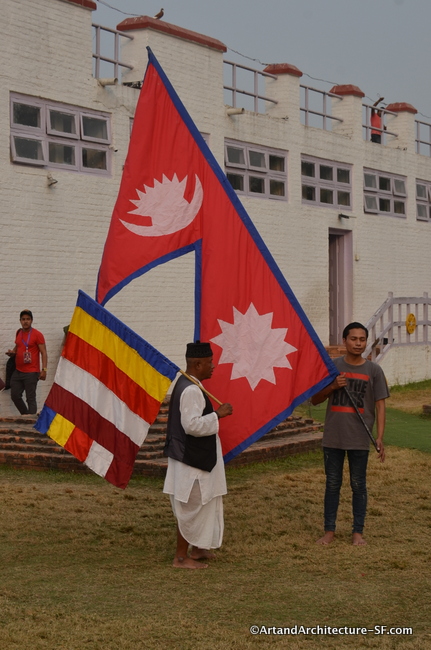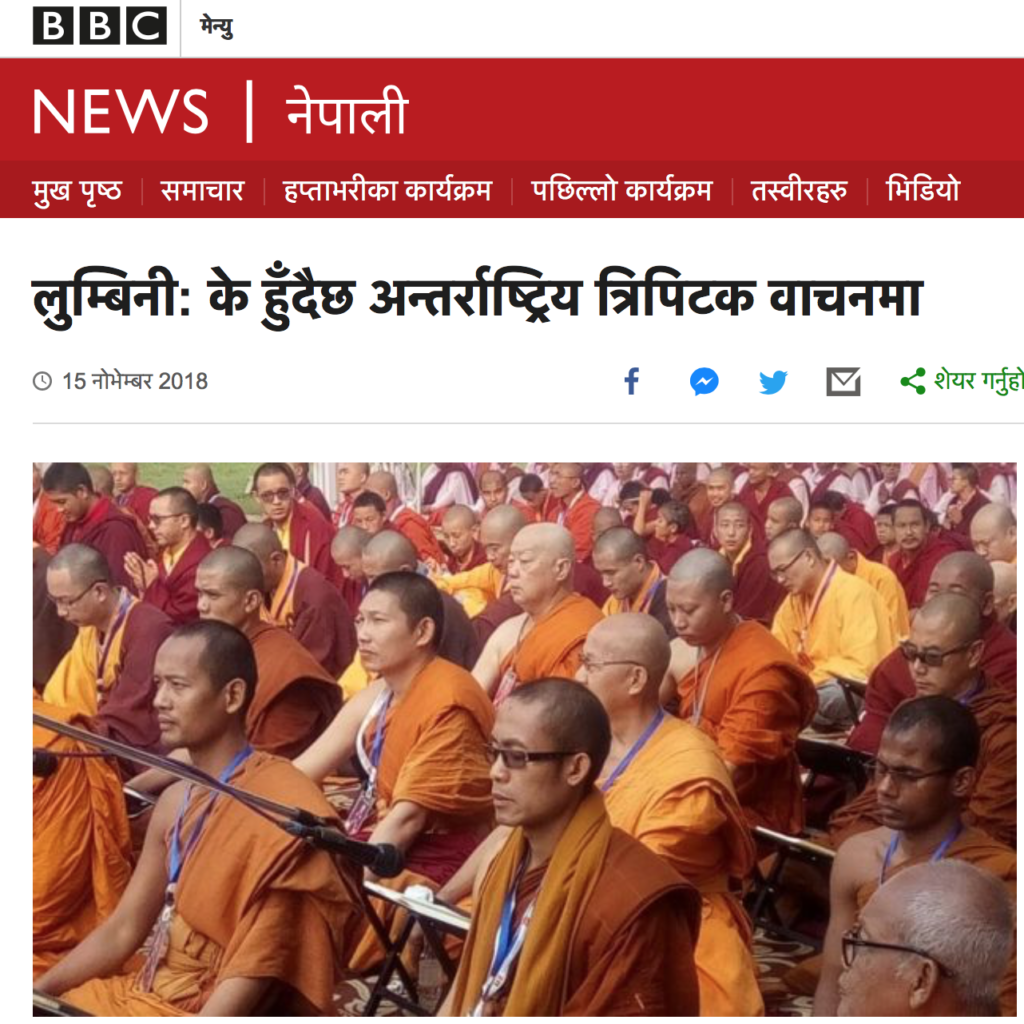District of Kapilavastu
Outside of Lumbini, Nepal
November 15, 2018
Today I had the absolute pleasure of being taken around the countryside of Lumbini by Bikram Pandey. The gentleman calls himself a Tourism Pro-activist. He is a consummate lover and promoter of Buddhism and the historic Buddhist sites of the Lumbini Area.
These sites are way off the beaten path, and without Mr. Pandy, I do not believe it would have been possible to even find them.
There are five sites so this will be a long post, but if you are a history or archeological nut as I am, it is worth it.
The first site we saw was Araurakot. There is so little information regarding these sites that I must rely on the signs placed at each site for the information. For this reason, I want all of this to be considered in the context of viable, but not confirmed.
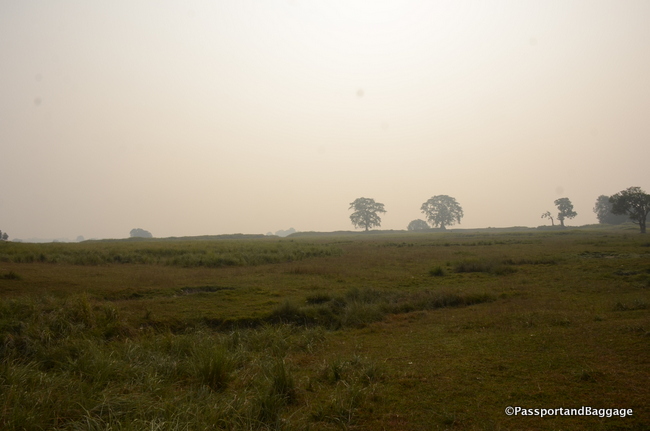 Araurakot is identified with the Natal Town where Knakamuni Buddha lived, grew up and spent his married life. Kanakamuni Buddha was one of the five Buddhas that were said to have preceded Sakyamuni Buddha.
Araurakot is identified with the Natal Town where Knakamuni Buddha lived, grew up and spent his married life. Kanakamuni Buddha was one of the five Buddhas that were said to have preceded Sakyamuni Buddha.
Very little has been done to excavate the site. A Nepalese-Italian Joint archeological team surveyed Arauokat in 1996-1997, but nothing else has been done.
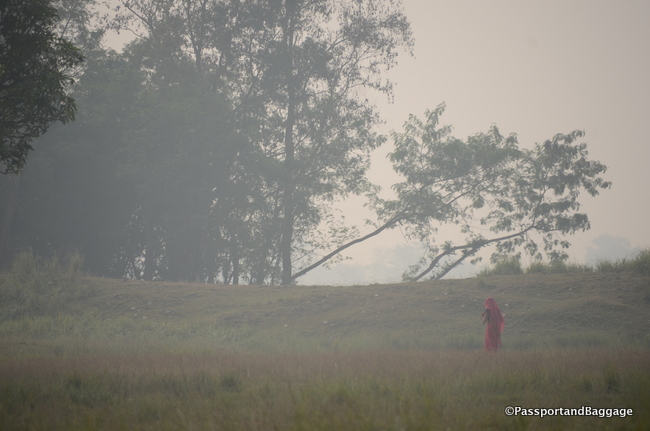
Araurakot
The second site is very close by, Niglihawa. This is identified as the place where Kanakamuni Buddha was born. According to the Ashokan Pillar, the emperor visited the site in 249 BC.
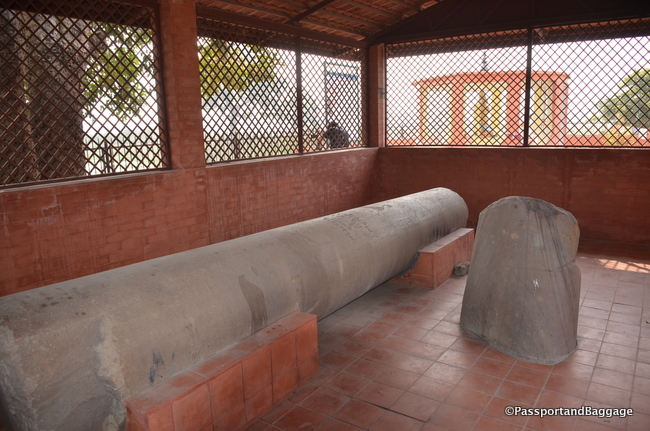
The upper half of the pillar is 14 feet 9 inches long and 2 feet in diameter. Both the bottom and the capital are missing but according to Xuanzang, a Chinese traveler and detailed diarist, it was a lion capital. Xuanzang (7th Century CE) and Fa-hsien (399-413 CE) (another Chinese traveler and writer) both mentioned the Kanakamuni stupa and the pillar in their travel accounts.
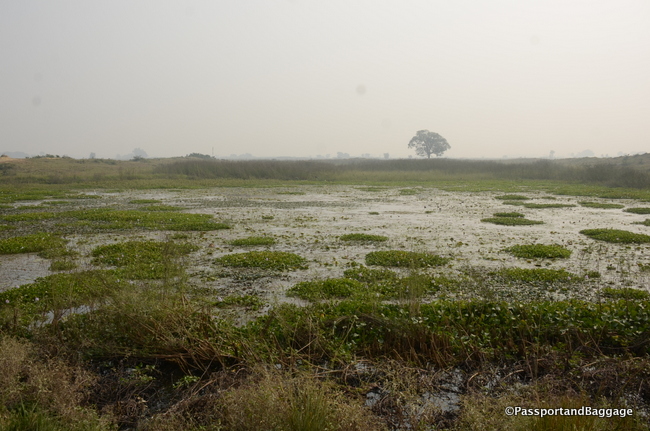 Dr. Anton Fuhrer (1896-1897) also mentioned the existence of a Great Nirvana Stupa, which is now missing. Dr. Fuhrer claimed the Nirvana Stupa of Kanakmuni was one of the oldest monuments existing at that time. It is assumed the stupa was demolished during the construction of the nearby pond.
Dr. Anton Fuhrer (1896-1897) also mentioned the existence of a Great Nirvana Stupa, which is now missing. Dr. Fuhrer claimed the Nirvana Stupa of Kanakmuni was one of the oldest monuments existing at that time. It is assumed the stupa was demolished during the construction of the nearby pond.
Alois Anton Führer (1853 -1930) was a German Indologist who worked for the Archaeological Survey of India. He is known for his archaeological excavations, which he believed proved that Gautama Buddha was born in Lumbini, Nepal.
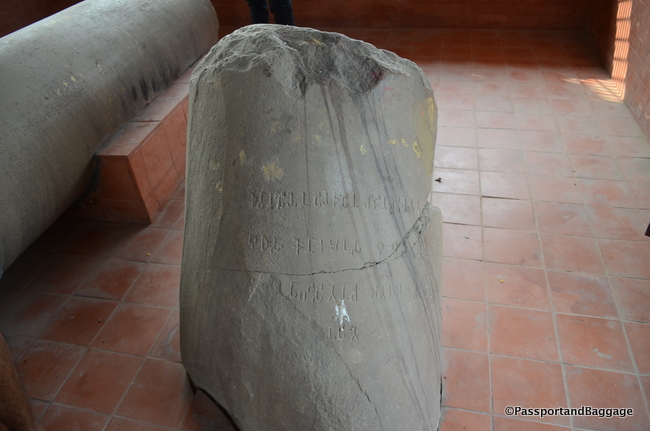
The inscription reads: “His Majesty King Priyadarsina in the 14th year of his reign enlarged for the second time the stupa of Buddha Kanakamuni and in the 20th year of his reign, having come in person, did reverence and set up a stone pillar”

The inscription written on the upper piece contains the words “Om mani padme hum” and “Three Ripu Mallas”Chiram Jayatu 1234” Or, King Ripu Malla of Western Nepal. 1234 represents the year, which is supposed to correspond to the Shaka era of 1312 CE. The Shaka era is a historical calendar, there are two, and both are controversial regarding their existence.
The third site we visited was the site of the large city of Kapilvastu or Tilaurakot. This site accompanies over 24 acres, and here we were met by the overseer of the site Mr. Madhav Acharya.
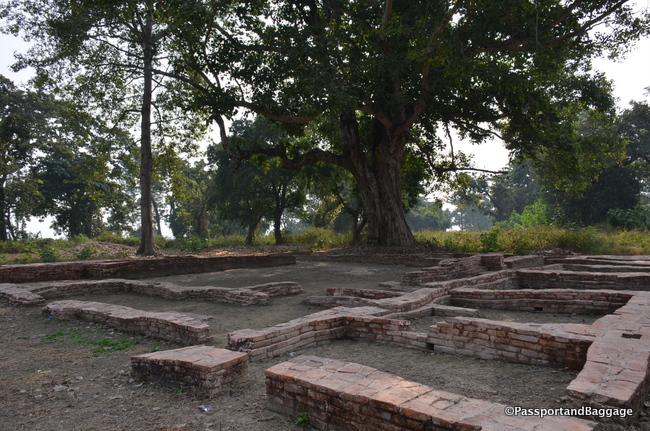
We began at the Eastern Gateway, also known as Mahavinishkarmana Dwara. This is the gate from which Lord Buddha left his princely world and ventured into the “real world” The gate consisted of a 19-foot wide road flanked on either side by bastions
There was a Japanese funded UNESCO investigation of the area. The survey identified roads and structures across the city, as well as a monumental complex located at its center.
You can find a full detail on every aspect of the excavation here.
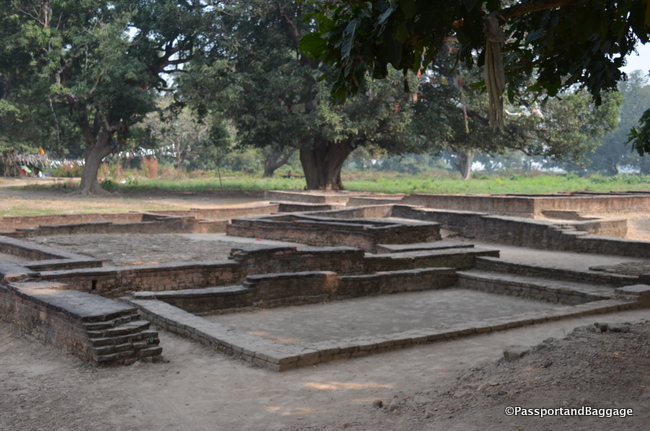
The layout of many of the structures comprised several rooms linked by an adjoining veranda. The brick walls were regular and low and had slots and postholes cut into them, to accommodate large wooden posts. In the absence of large quantities of tiles on the site, it is believed that the structures would have had thatched roofs and mud walls on top of the brick foundations and timber framework. Such architecture has also been identified in the medieval Kathmandu Valley and there is a possibility that such urban architectural traditions developed in the Terai (a lowland region of southern Nepal) and were transferred to the urban-focused communities. These ruins date to the latest phases of occupation of Tilaurakot, not the time of the Royal Palace of Siddartha Gautama. If those exist, they would be much deeper in the sites archaeological sequence. They also most likely would have been constructed of timber.
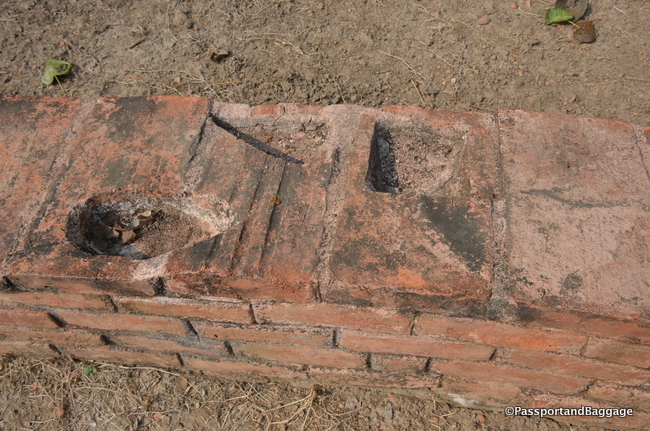
Postholes
One of the more unique sites on the property is the Samain Mai Temple. Found on one of the highest spots in the area the dig undertaken by the Japanese-Nepalese team allowed them to trace the human activity from its origins in the 8th century BCE to the present.
The existence of a temple in the complex was mentioned by both Xuanzang and Fa-hsien.
In the center of this spot is a Hindi Temple constructed of brick and surrounded by elephants, lots and lots of elephants.
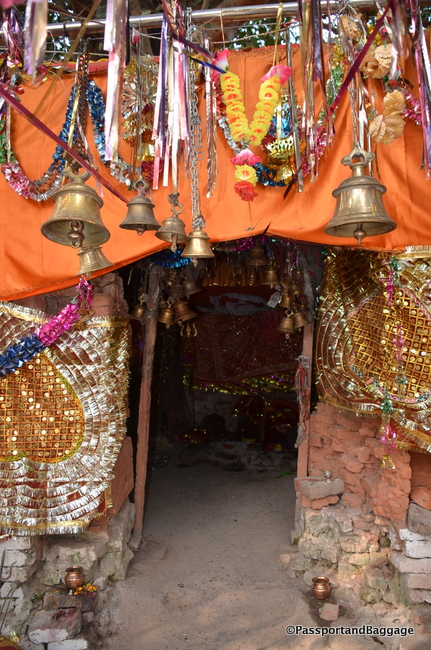
The temple houses fragments of ancient sculptures.
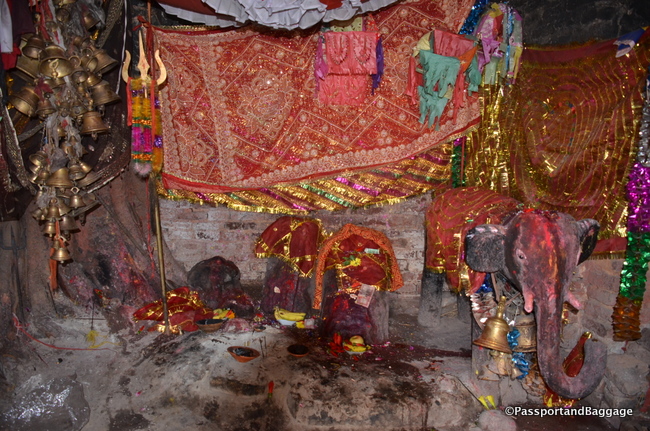 *
*
 *
*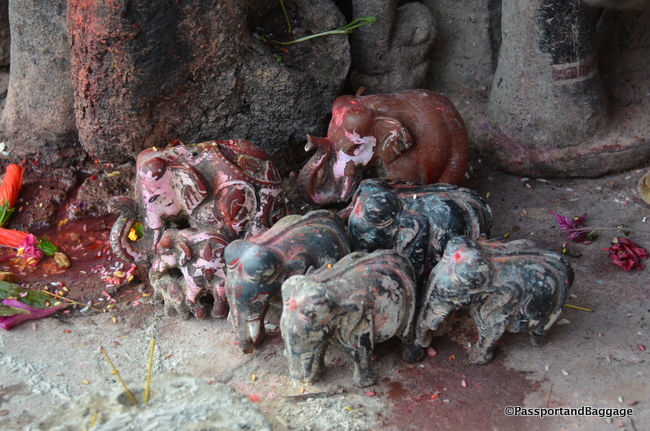 *
* *
* 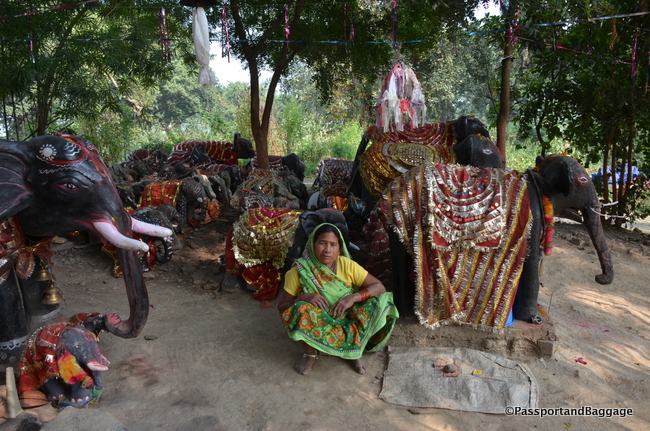
*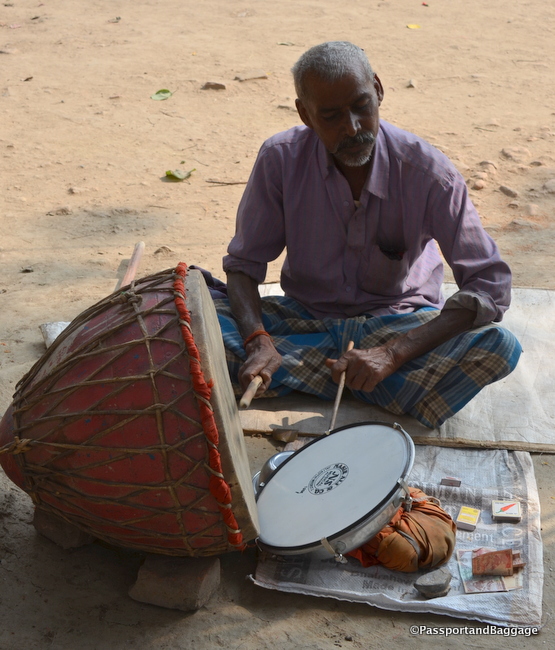 There is considerably more to see and show in this site, it is highly worth seeking it out if traveling in the area.
There is considerably more to see and show in this site, it is highly worth seeking it out if traveling in the area.
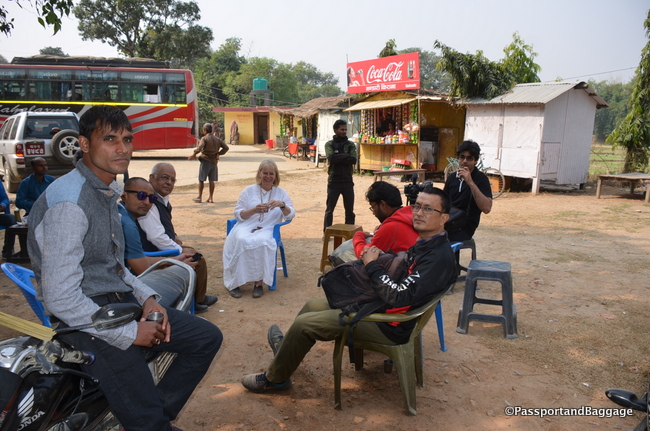
These were such special sites that I actually allowed to have my photo taken. On the immediate right were two reporters from Nepal that were also very interested in spreading the word about Buddhism in the area. The gentleman behind them is one of our photographers Naneet. Deepak Anand is in the sunglasses and behind him is Mr. Pandey. The guy on the bike is a tour guide.
The next site is somewhat inexplicable, that is Kudan, with the Ancient Nyigrodharama garden.
Some scholars say that this is the site where Sakyamuni Buddha (after enlightenment) met for the first time with his father King Suddhodhana. Some say it is the Natal-town of Krakuchanda Buddha. A 1962 excavation suggested the original site was occupied by Hindus in Medieval times.

Known as the Rahul stupa, it is said that this was built to commemorate the spot where Rahul, son of Sakyamuni Buddha was ordained. The little folly on the top is not explained.
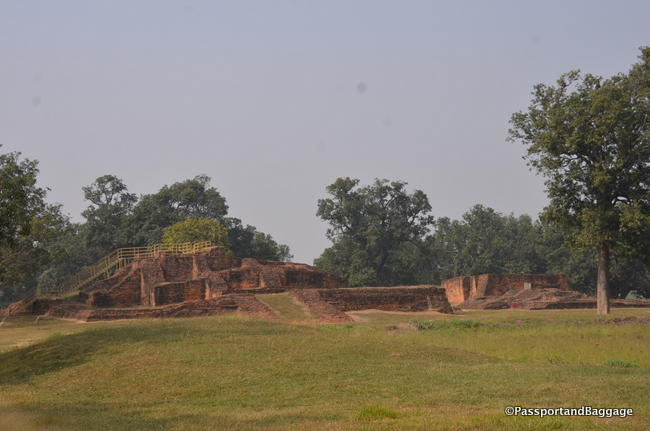
This is also said to be where Sakyamuni Buddha spoke of the five Suttas of Majjhimanikaya. One of the northernmost buildings was supposedly built to commemorate where Queen Prajapat Gautam offered Sakyamuni Buddha the golden embroidered robe and that Yasodhara invited the Buddha for a meal. Recent excavations show the site dates back to the 8th Century BCE.
The architecture at this site is like no Buddhist architecture I have ever seen or studied.
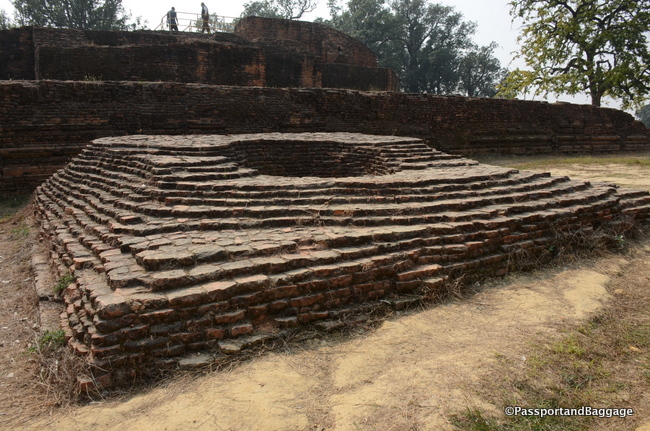
This structure has been called a well.
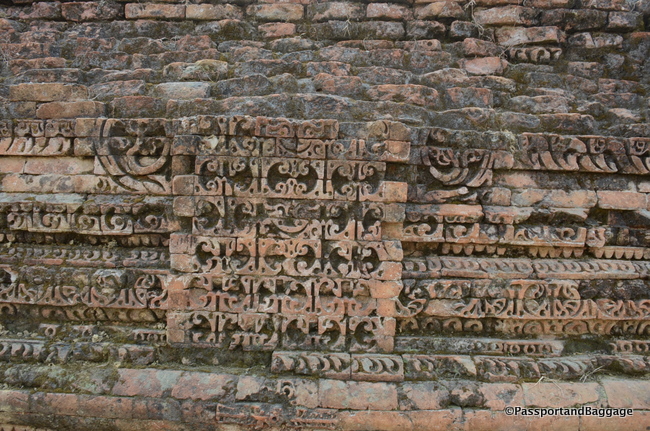
Carved bricks along the bottom of one of the structures.
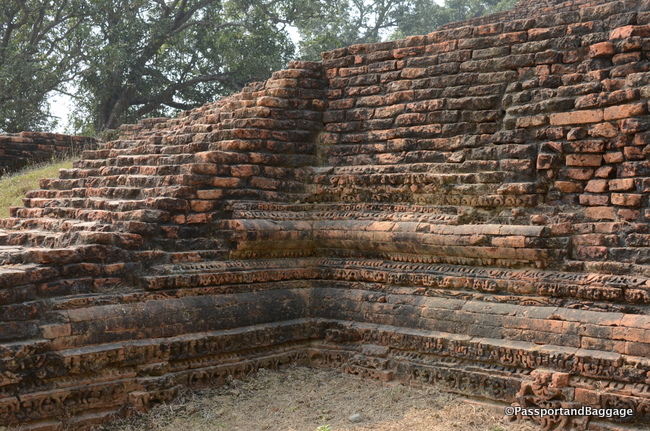
A close up of the intricate brickwork along the bottom of one of the structures.
Our last site was another Ashokan Pillar, it is called Gatihawa.
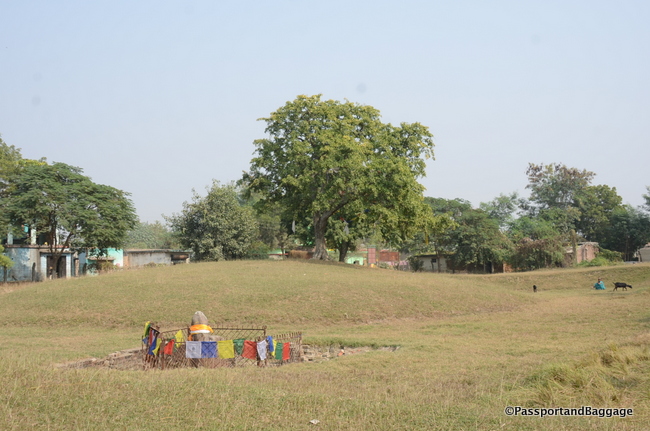
Gotihawa is identified as the place where Krakuchhanda Buddha was born, attained enlightenment and met his father after his enlightenment. Ashoka is said to have visited the site in 249 BC, erected the Ashoka Pillar and built a big stupa.
Fa-hsien and Xuanzang both described the existence of Gotihawa as the birthplace of Krakucchanda Buddha and the stone pillar bearing a lion capital.
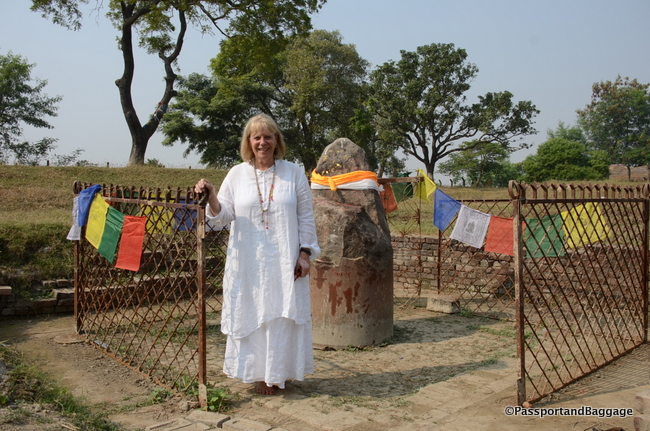
I could not resist having my picture taken, as I am sure the next time I visit this will be surrounded by a big high fence.
Dr. L.A. Waddell cut a trench around the mound and found the stupa had a diameter of 22 meters (72 feet) with a circumambulatory path around it. Laurence Austine Waddell,(1854–1938) was a British explorer, Professor of Tibetan, Professor of Chemistry and Pathology, Indian Army surgeon, collector in Tibet, and amateur archaeologist.
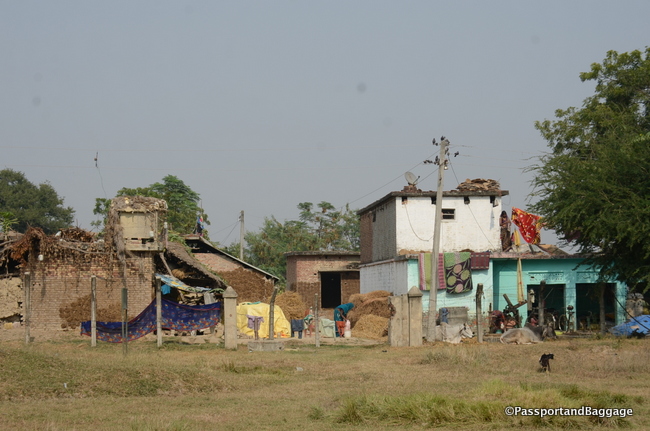
The Pillar sits between a small hamlet and rice fields
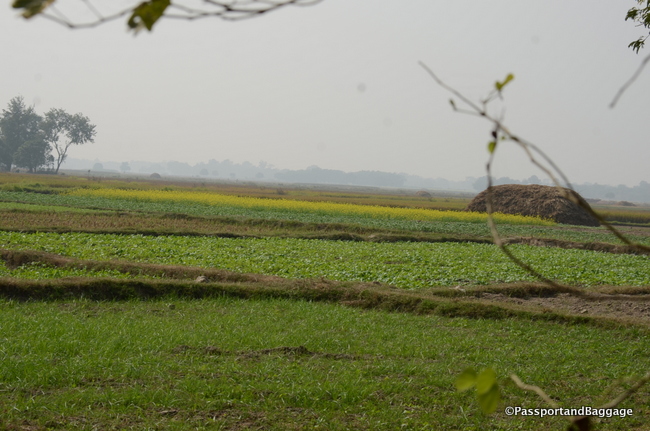
Interestingly, Waddell had actively traveled around British controlled India in search for Kapilavastu. Cunningham had previously identified Kapilavastu as the village of Bhuila in India which Waddell and other people at the time concluded to be incorrect. They were searching for the birthplace by taking into account the topographical and geographical hints left by Fa-hsien and Xuanzang. Waddell was first to point out the importance of the discovery of Asoka’s pillar in Niglihawa (site 2 described above) in 1893 and estimate Buddha’s birthplace as Lumbini. He subsequently corresponded with the Government of India and arranged for the exploration of the area. It was also Waddell who was appointed to conduct the exploration to recover the inscriptions, but at the last moment, he was unable to make the trip and Dr. Fuhrer was sent to carry out the exploration arranged by him. Dr. Fuhrer found the Lumbini grove, with their inscriptions at the very spots pointed out by Waddell.
The Japanese – Nepalese team excavated the area in 1993 and found remains dated from the 10th to 9th century BCE through to the 3rd or 4th century CE.
Two of the gentleman on the trip this day were filmmakers. In February of 2019 they were able to complete the film they were working on that helps to describe the trip we were on. I hope you enjoy it and that it helps you to understand why we travel in India and Nepal
I was traveling with five men, when we passed these delightful little structures I asked what they were. Each man was fervent in his answer, and yet I didn’t think any of them were correct. I asked the driver to stop the car.
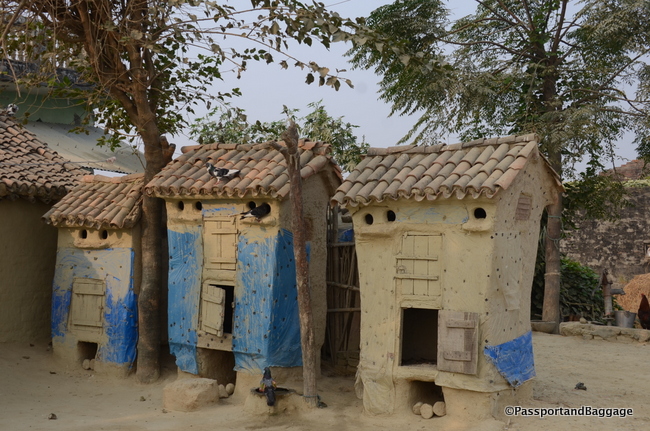
They are, of course, dovecotes, none of the men had that answer. I will say Mr. Pandy did have the courtesy to thank me for making them stop and for teaching him something new. They really are exquisite pieces of architecture.
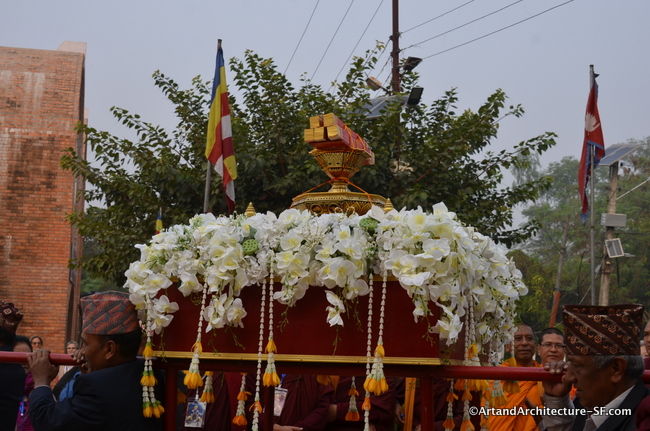 And streams of participants
And streams of participants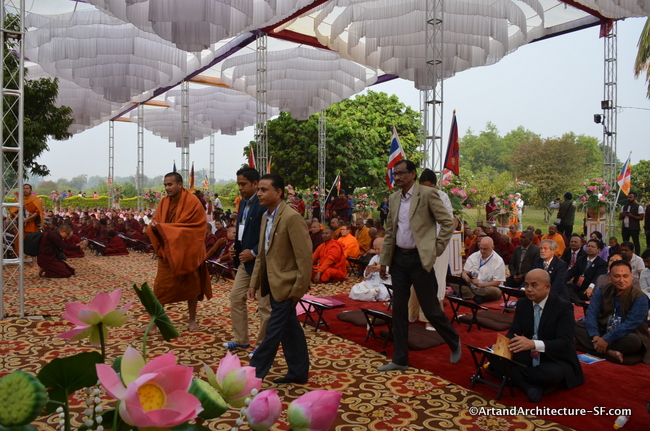 But once the chanting began it was a solemn and beautiful ceremony.
But once the chanting began it was a solemn and beautiful ceremony. Siddhartha Gautama is purported to have been born in 623 BCE in the gardens of Lumbini, which soon became a place of pilgrimage. Among those pilgrims was the Indian emperor Ashoka, who erected one of his commemorative pillars here.
Siddhartha Gautama is purported to have been born in 623 BCE in the gardens of Lumbini, which soon became a place of pilgrimage. Among those pilgrims was the Indian emperor Ashoka, who erected one of his commemorative pillars here.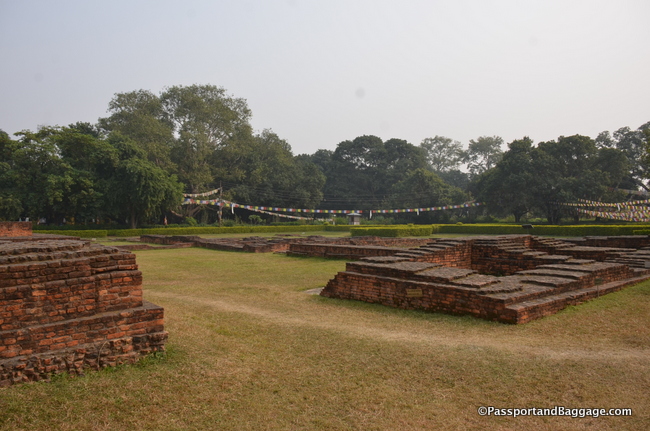 As with much of Buddist history, it is difficult to be accurate with the exact location of many Buddhist sites. The best information scholars have to go on is the writings of two Chinese explorers Xuanzen (7th Century CE) and Fa-hsien (399-413 CE), and the placement by Ashoka of his pillars.
As with much of Buddist history, it is difficult to be accurate with the exact location of many Buddhist sites. The best information scholars have to go on is the writings of two Chinese explorers Xuanzen (7th Century CE) and Fa-hsien (399-413 CE), and the placement by Ashoka of his pillars.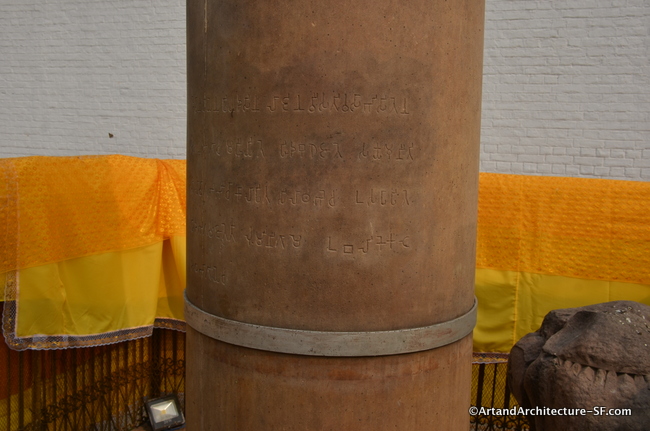 The emperor had also erected two other pillars during his visit to Lumbini and Kapilvastu, one in Gotihawa, the place of Krakuchhanda Buddha, and another at Niglihawa, the place of Kanakmuni Buddha.
The emperor had also erected two other pillars during his visit to Lumbini and Kapilvastu, one in Gotihawa, the place of Krakuchhanda Buddha, and another at Niglihawa, the place of Kanakmuni Buddha.